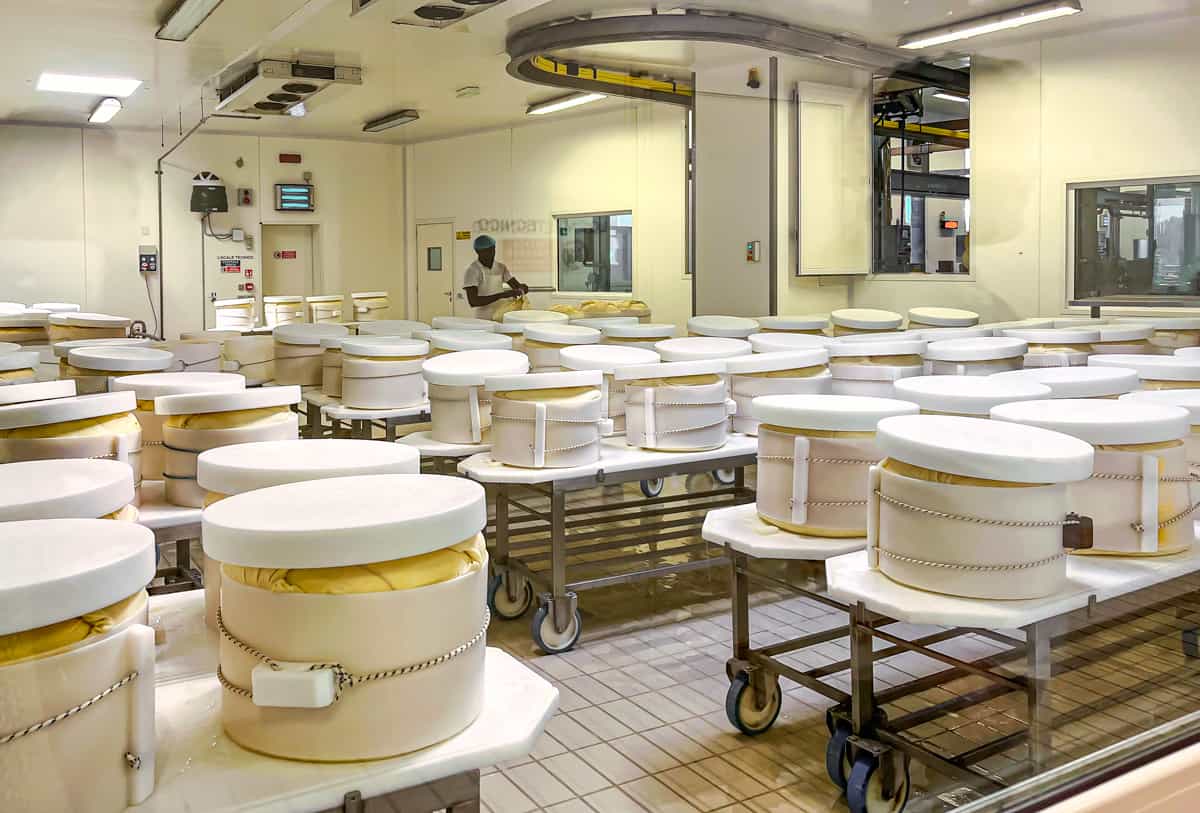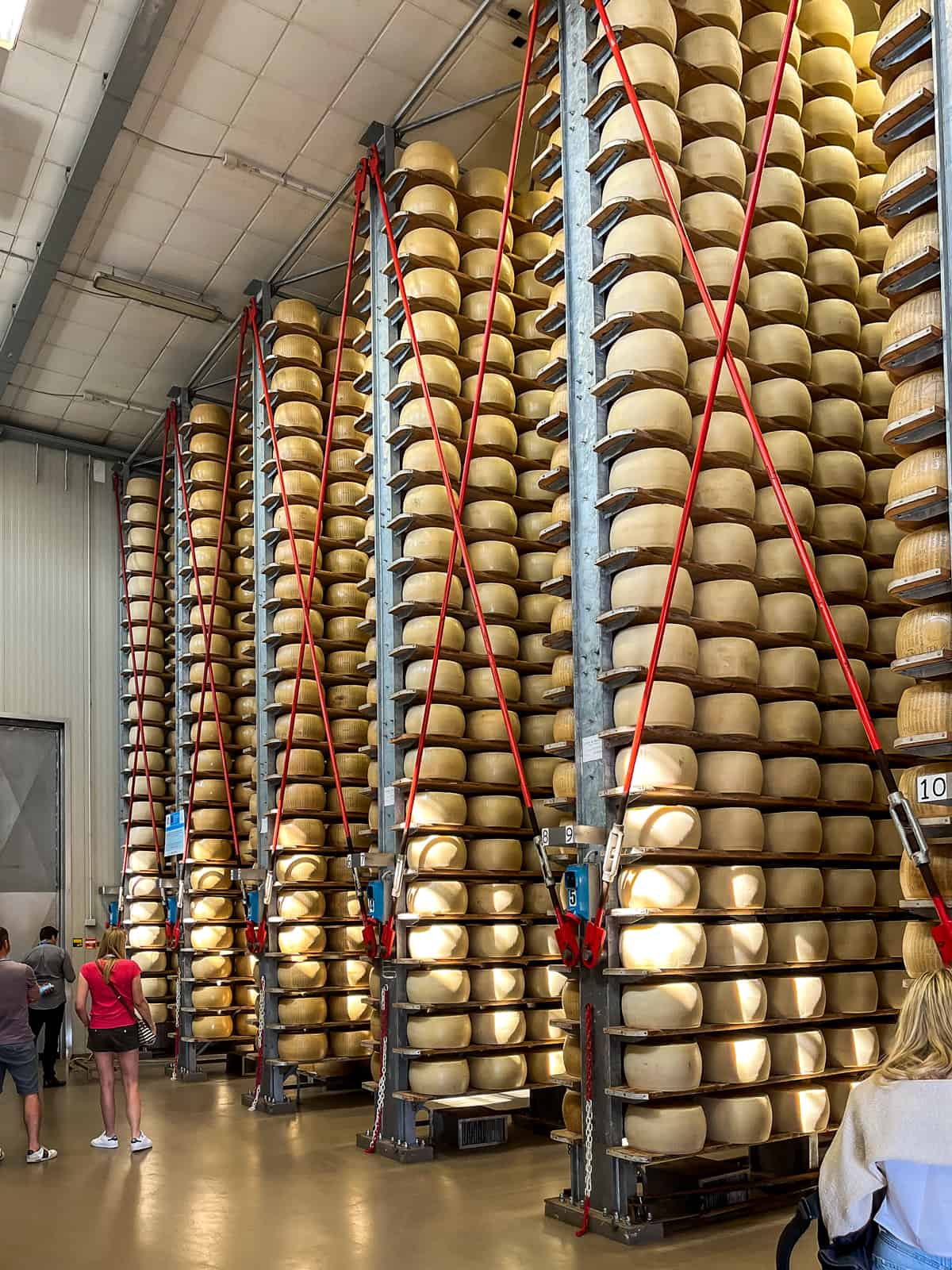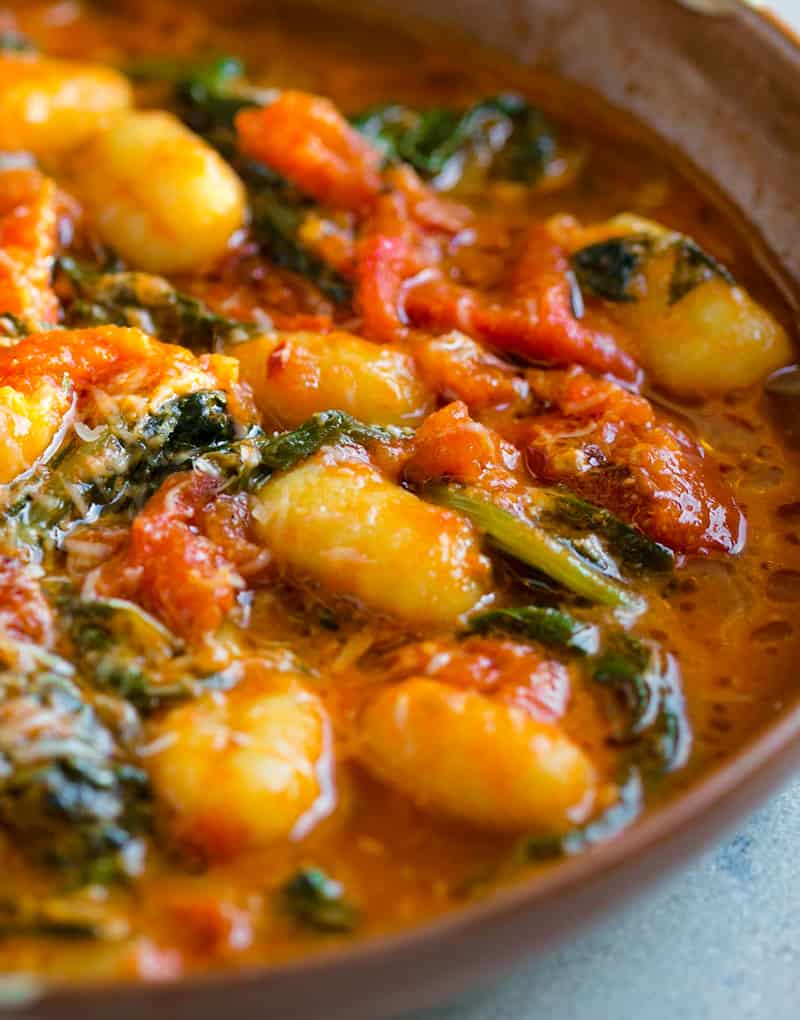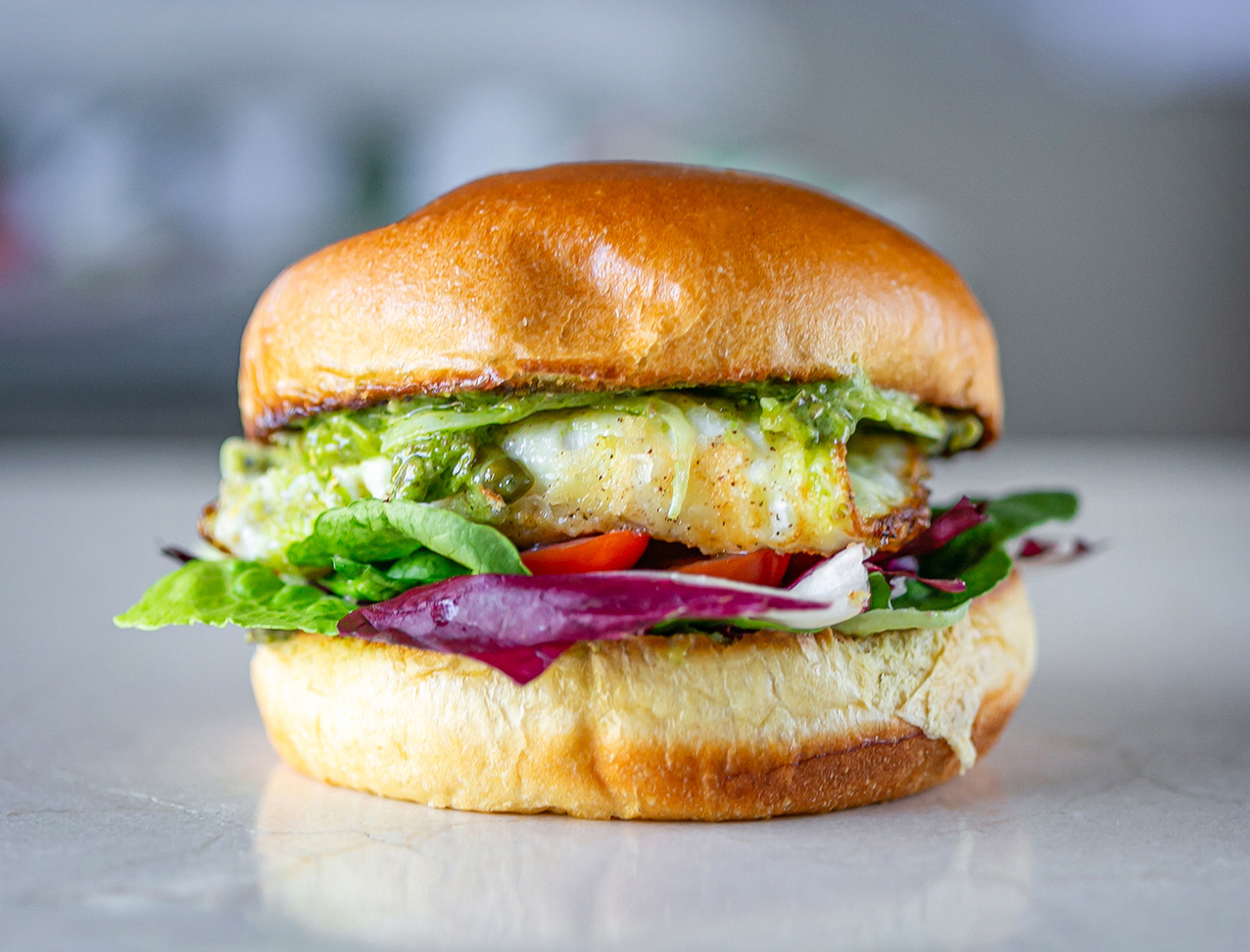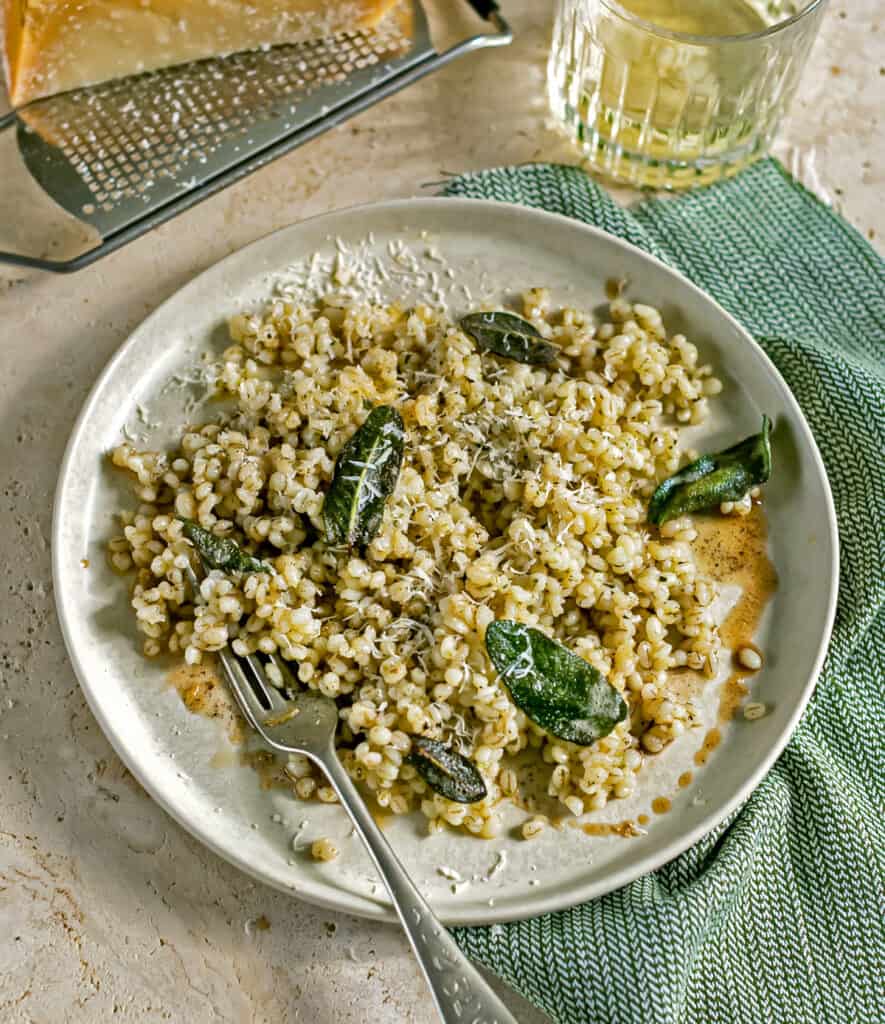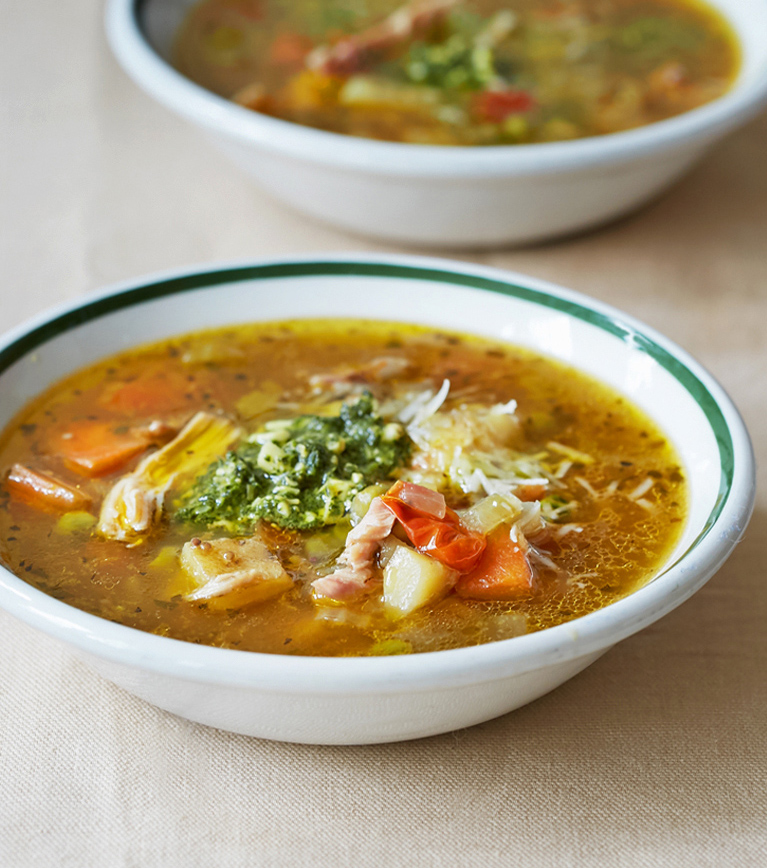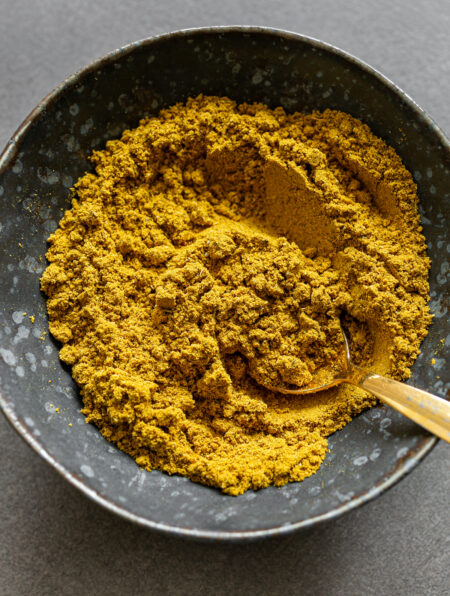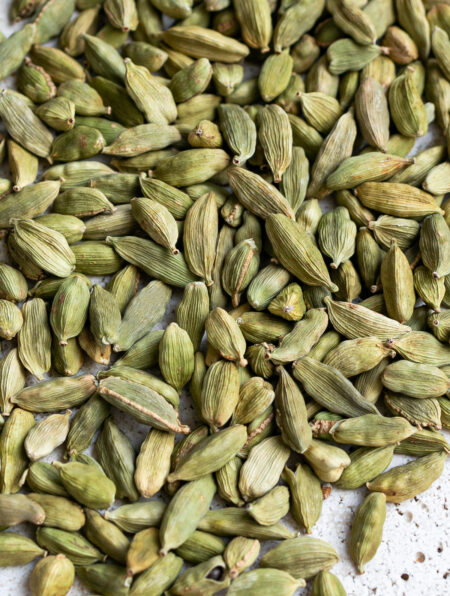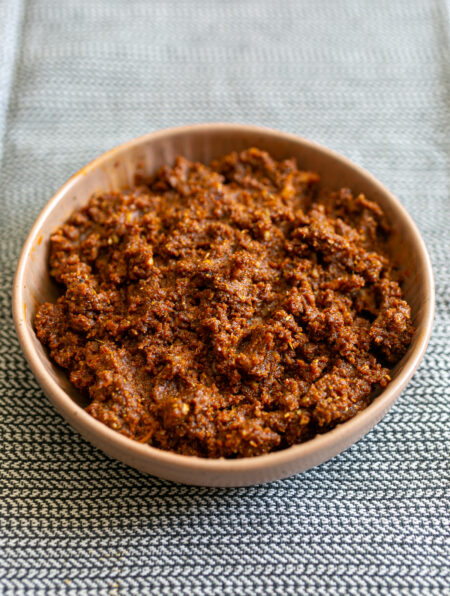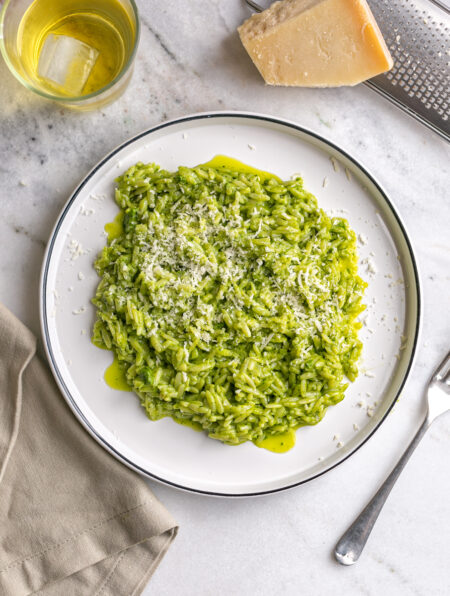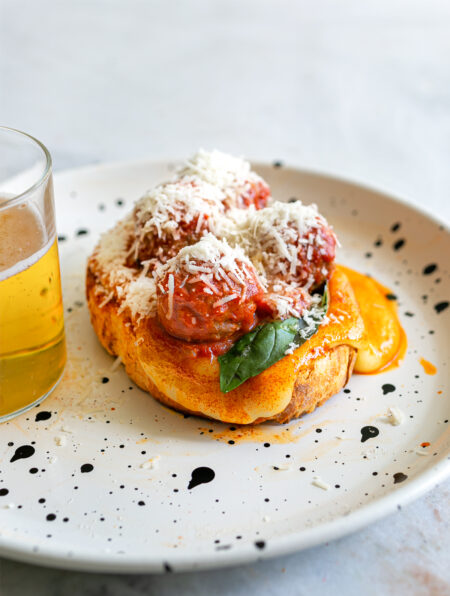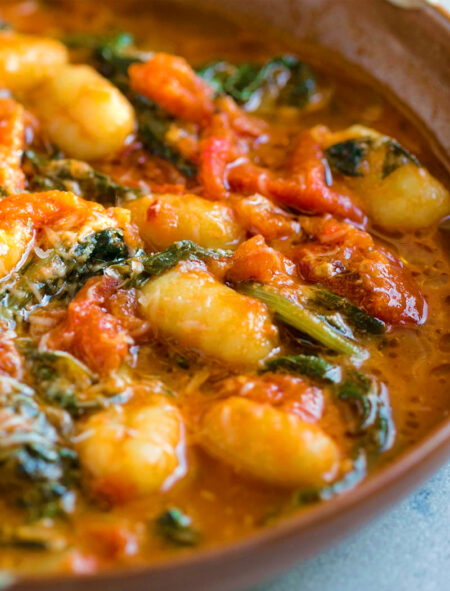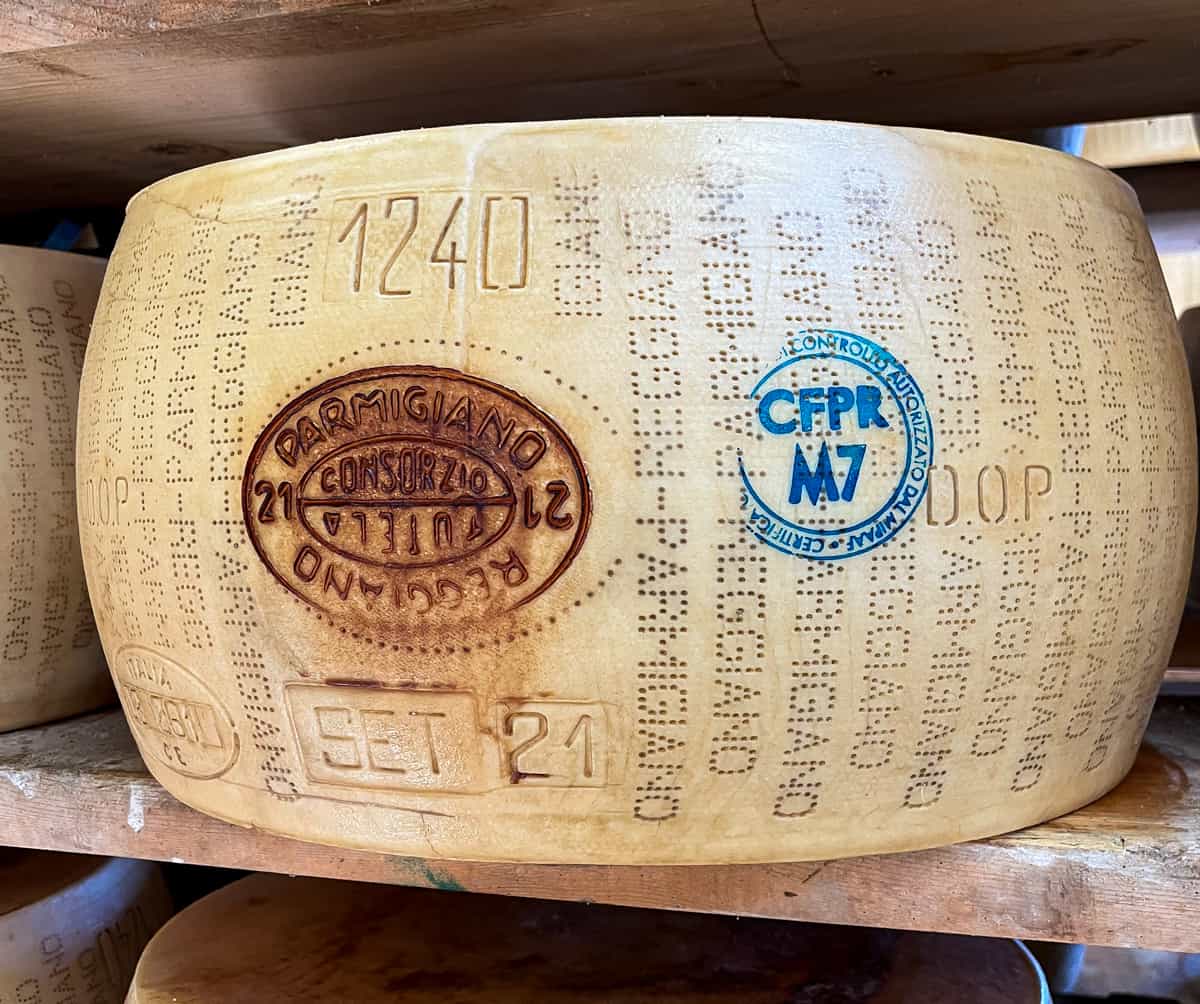 Guide: Parmigiano Reggiano, Parmesan and Grana Padano. This article was written after completing the guided tour of the official Parmigiano Reggiano production in Moderna, Italy.
Guide: Parmigiano Reggiano, Parmesan and Grana Padano. This article was written after completing the guided tour of the official Parmigiano Reggiano production in Moderna, Italy.
Parmesan cheese may possibly be the most internationally known and purchased Italian cheese in the world
Not only a famous garnish for pasta and pizza, parmesan cheese has worked its way into our daily lives due to its consistent availability on supermarket shelves all year round. So, what is parmesan cheese exactly and how is it made? You may be surprised to know the answer goes a little deeper than initially thought.
The three cheeses: Parmigiano Reggiano, Parmesan and Grana Padano
Parmigiano Reggiano, Parmesan and Grana Padano are known in Italy as ‘Grana’ cheeses. Grana is a type of hard, mature cheese with a granular texture, most often used for grating.
Grana cheeses are typically made in the form of large wheels. The wheels are divided and split into various-sized wedges, ready to be packaged and sold, hence why the parmesan cheese you purchase is always in the shape of a wedge.
Most people assume that all three types of cheese are the same product, but the ingredients and production of each type vary greatly, defining their order of quality and authenticity.
Below: wedges of Parmigiano Reggiano packaged and ready for sale
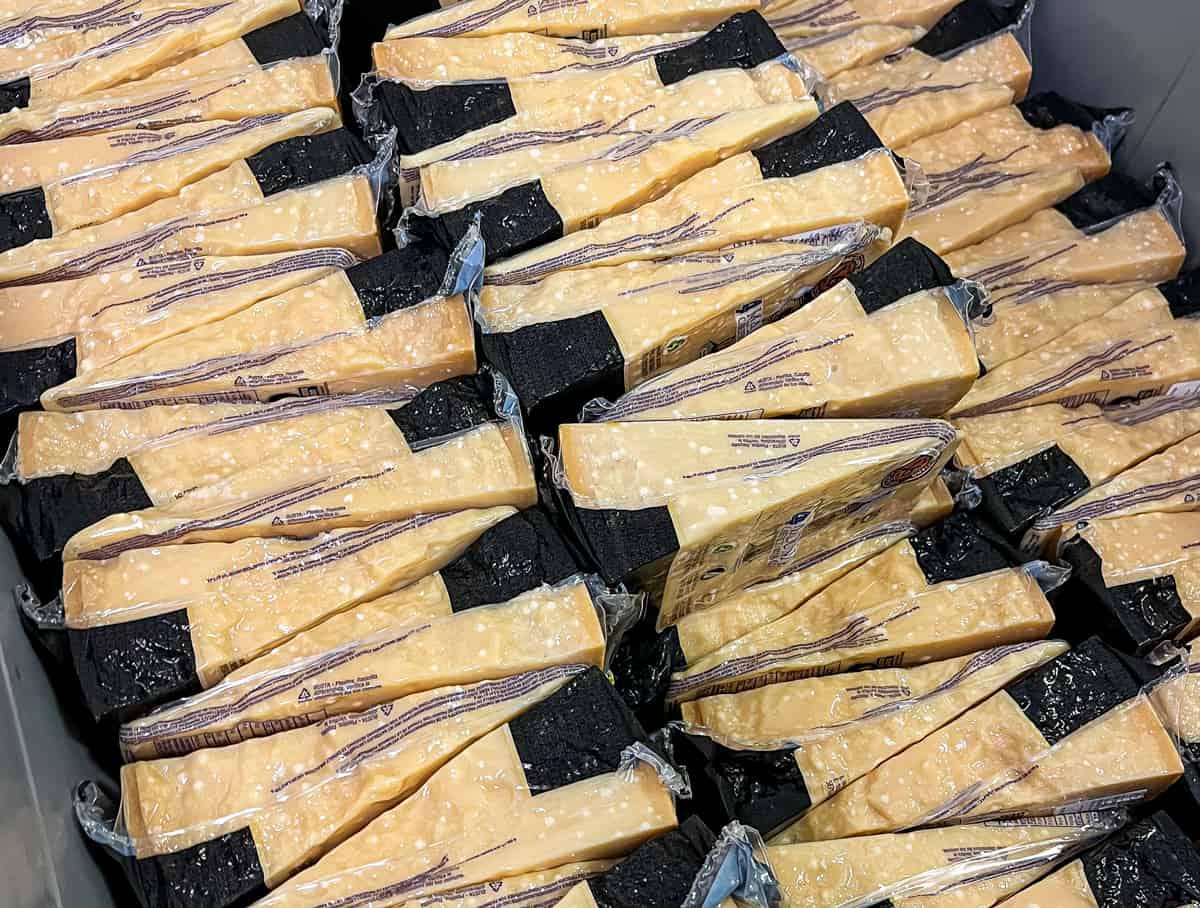
What is the difference between Parmigiano Reggiano, Parmesan and Grana Padano?
Below you will find information on the difference between these three kinds of cheese along with location and production methods, the maturing process and the final classifications that give each cheese its name and flavour.
What is Parmigiano Reggiano?
Parmigiano Reggiano is the highest quality ‘parmesan’ produced exclusively in the provinces of Reggio Emilia, Modena, Bologna (to the left of the Reno River), Mantua (to the right of the Po river) and Parma, where the cheese takes its name from.
These specific areas house farms where cows are fed on locally grown forage. What the cows eat is the most important detail: By law, Parmigiano Reggiano must uphold strict requirements to be stamped with Italy’s official label of Denominazione d’ Origine Protetta (DOP), which translates to Protected Designation of Origin (PDO). These include strict specifications that ban the use of additives such as silage, fermented feeds and animal flour.
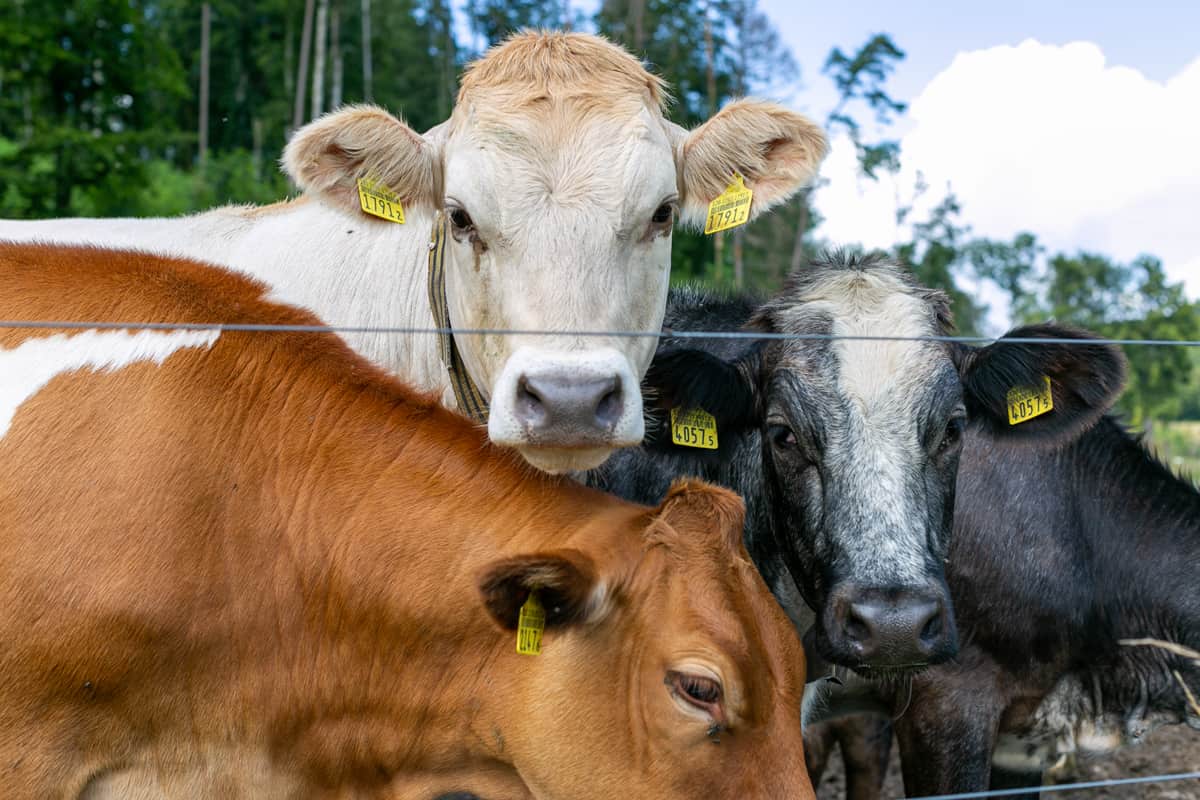
What animal does Parmigiano Reggiano come from?
Four different cow breeds are used to produce Parmigiano Reggiano. The most common breed among Parmigiano Reggiano producers is the ‘Italian Frisona’, a large black and white cow known for its high productivity. The Frisona has become the most widespread milk-producing bread in Italy and in the Parmigiano Reggiano area. Originally from the Friesland area of Holland, the breed was imported to Italy in the 19th century.
The other 3 breeds are as follows:
- ‘Bianca Modenese’ (white cow) a triple-attitude breed of cow providing milk and meat. Its milk is particularly suitable for the production of Parmigiano Reggiano due to its optimum ratio between fat, protein and the high content of K-casein that aids the milk-curdling process.
- ‘Vacche Bruna’ (brown cow) was introduced to Parma in the 18th century and is thought to be of Swiss origin. The brown cow’s milk is highly suitable for cheese-making also thanks to its high casein and fat content.
- ‘Vacche Rosse’, (red cow) this breed became popular after the second world war and is also used for its meat as well as milk. When producing with its milk, the right amount of cream rises to the surface, clots quickly and a firm and elastic curd forms, resulting in a high yield of dairy. This is due to the milk’s rich protein, casein, and calcium characteristics.
An interesting fact: You can find which cow breed was used to produce your piece of parmesan by checking the label on the back of the packet.

How is Parmigiano Reggiano made?
It takes 550 liters of milk to produce each wheel of Parmigiano Reggiano. A curd is created by adding rennet and a whey starter to the milk which is then churned in traditional upturned bell-shaped copper vats.
The curd is broken down by the cheesemaker into minuscule granules using a traditional tool called a “spino”. After cooking the curd at 55 degrees Celsius, the cheesy granules sink to the bottom of the cauldron forming a single mass.
After about fifty minutes the cheesemaker removes the cheese mass which will give rise to two twin wheels. Wrapped in a linen cloth, the cheese is then placed into a mould which forms the final round wheel shape.
Salting Process
After a few days, the wheels are submerged in huge baths with a solution of water and salt. Salt draws water out of the cheese via the process of osmosis. This is the last step of production before the cheese starts its maturation period.
How long does it take to make Parmigiano Reggiano?
The minimum maturation is 12 months. By 18 months it has developed a rich creamy but grainy texture. At 24 months it reaches its peak degree of maturation with full-bodied flavour and unique textural characteristics.
It’s also possible to continue maturing the cheese for much longer. 36, 40, 48, 70, and even 100-month-old cheeses are known to be available on the market, each age acquiring unparalleled individual aromas and flavours.
How do I know if my Parmesan cheese is real?
After twelve months of aging, every wheel is tested by trained experts known as Cheese Masters who can detect any defects inside the cheese by tapping it with a hammer and listening to the sound (the sound identifies how much air is inside the wheel).
Every wheel of cheese has its own unique identity card
Wheels that pass the test are further certified with a casein plate that holds a unique and sequential alphanumeric code. Cleverly, this is also an identity card that makes it possible to trace each wheel’s entire history of production, right to the very beginning.
The month and year of production are engraved onto the rind, as well as its cheese factory registration number. Unique dotted inscriptions are placed around the circumference of the cheese wheel. This is how to identify an authentic wheel, if it doesn’t have the stamps then it’s not real Parmigiano Reggiano. See below for an example of how the official stamp looks.
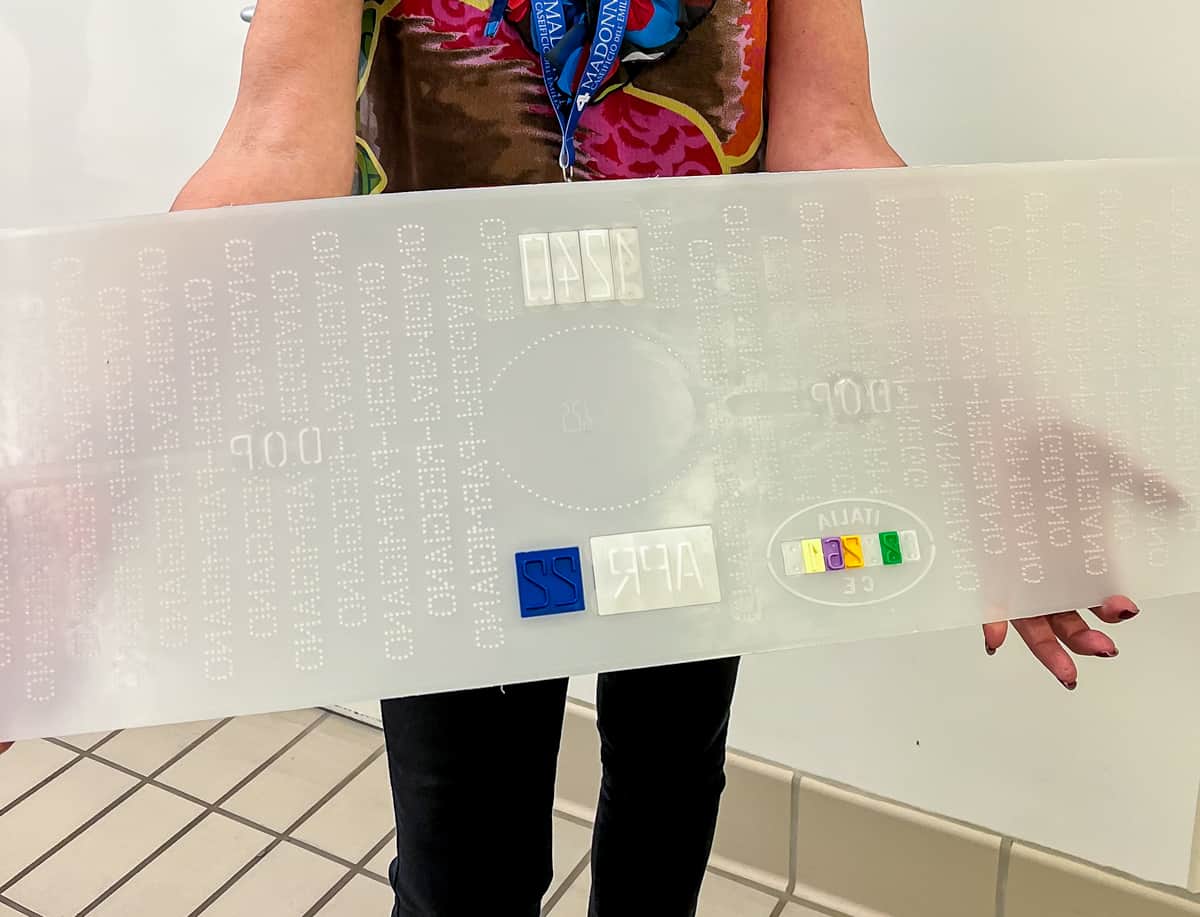
Wheels that fail the test
Wheels that contain too much air and don’t reach the standards expected by the Consortium are still edible. Those with minor defects in the structure are still branded with the certification mark but are also marked with parallel lines circulation the whole way around the rind (see picture below).
These wheels are classified as ‘Mezzano’ or ‘medium-grade’ Parmigiano Reggiano, meaning they’re best eaten young. These wheels are sold to restaurants and other manufacturers within the food industry at a discounted price. Medium-grade parmesan can be identified in supermarkets sold as packaged ‘pre-shaved’ parmesan, or used as an ingredient inside any prepared fresh or frozen food product that contains parmesan.

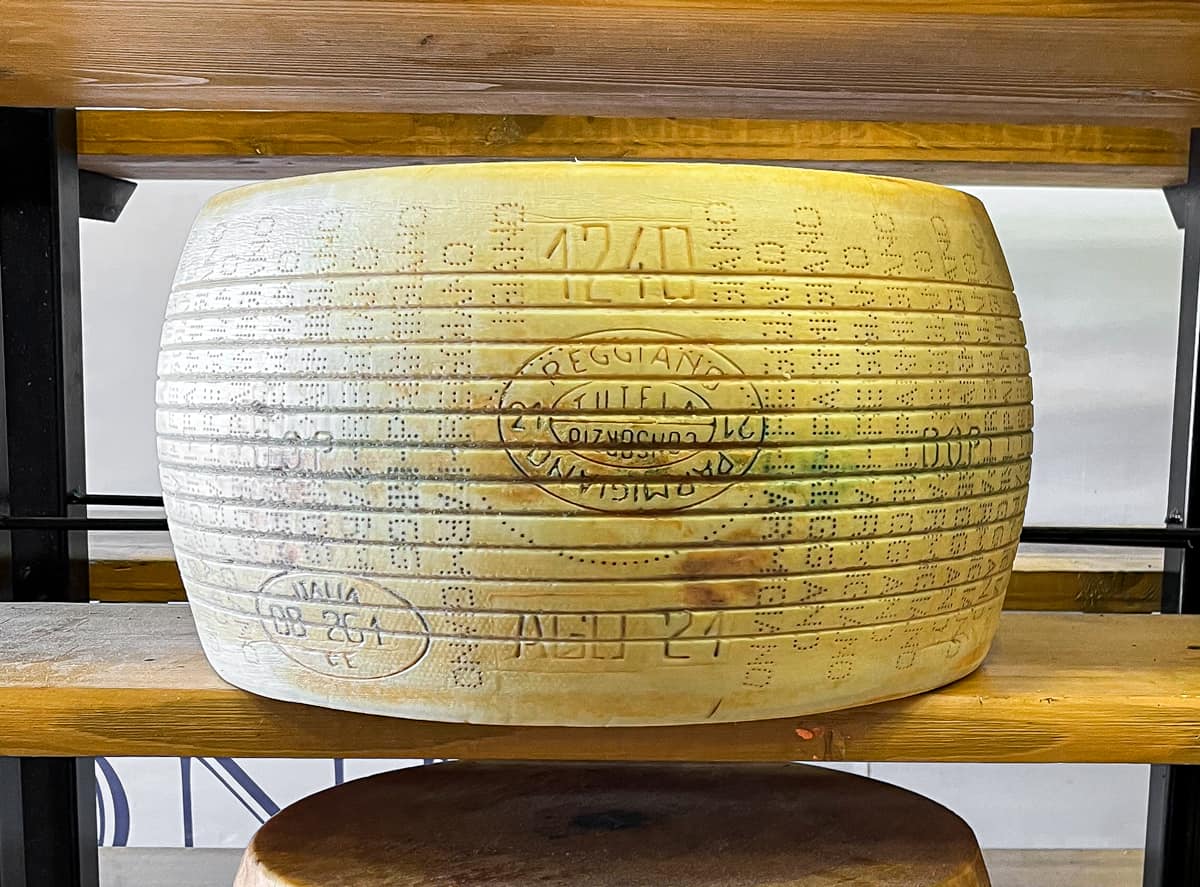
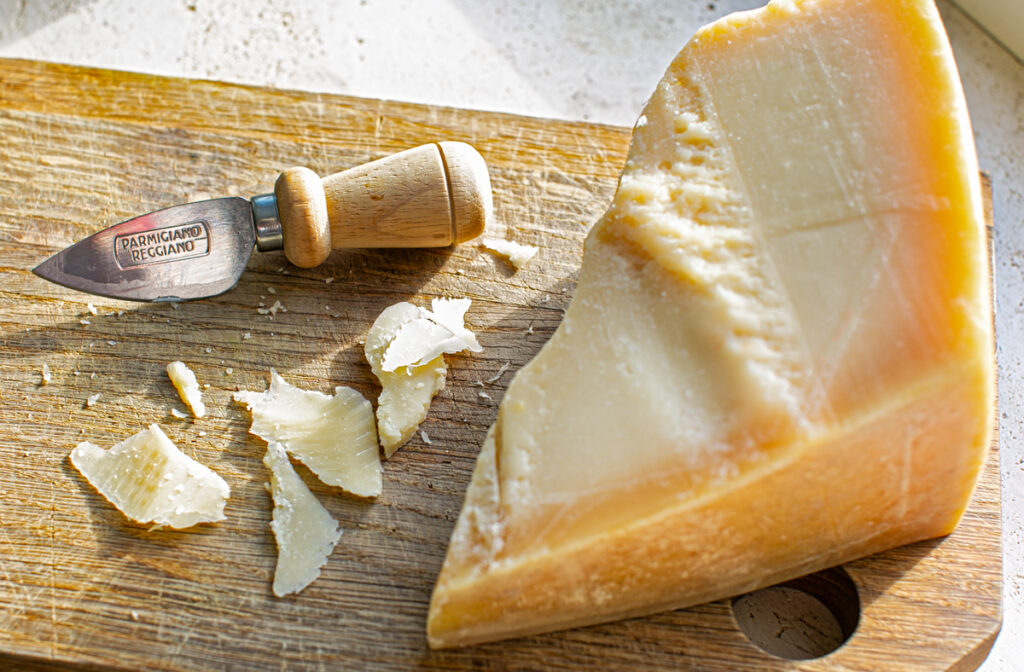
Interested in learning more? Visit the official Parmigiano Reggiano website for videos, photos and further details on production

What is Parmesan?
‘Parmesan’ (English translation) refers to all other types of ‘grana’ cheeses produced in a similar way but were produced outside of the regulated area in Italy. Although some brands have similar taste and texture, they do not uphold the feeding and production requirements the DOP requires to officially certify the cheese as Parmigiano Reggiano.
As any cheese labeled ‘Parmesan’ is not regulated, it can also be produced outside of Italy by skilled artisanal cheesemakers and sold under the name of Parmesan. Typically, it is aged for 10 months or less for faster production and will not have the official identifying sequential alphanumeric code stamp or cow breed label on the back of the packet. In most circumstances, this is the parmesan you are buying in the supermarket and it could have been produced and imported from any particular country or cheesemaker.
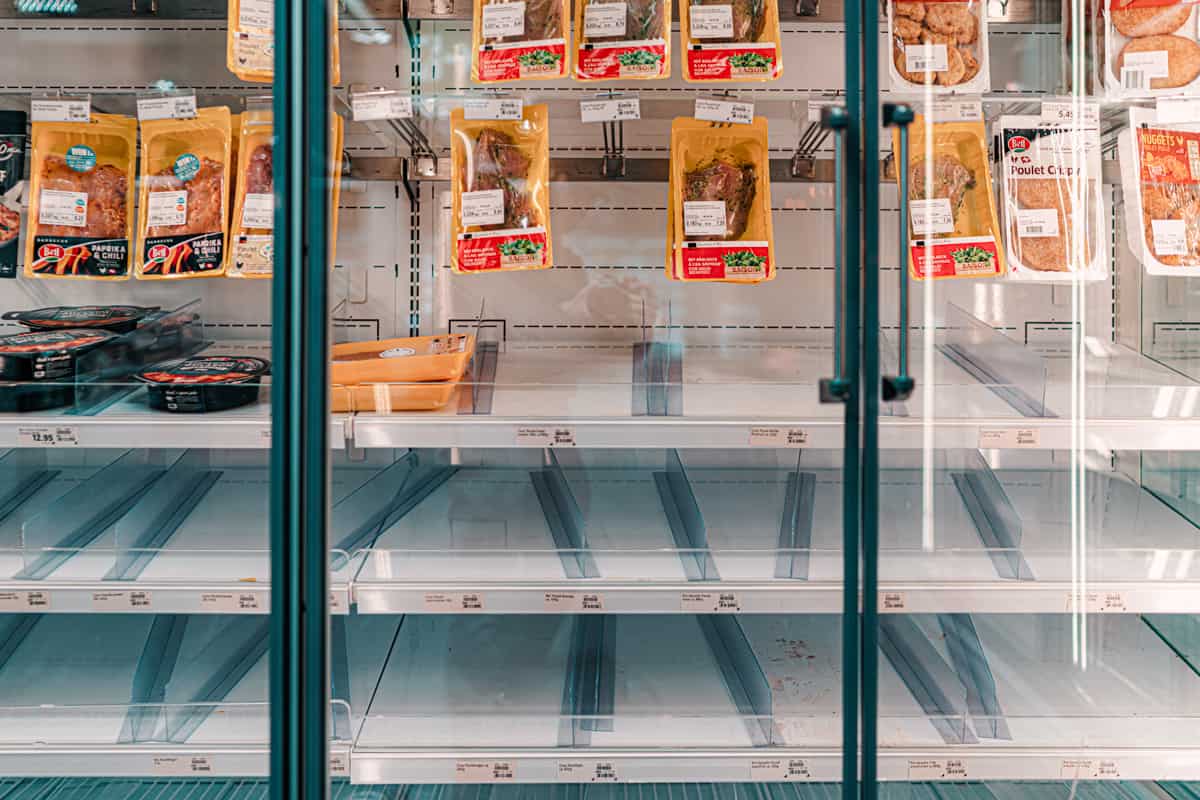
The non-certified Parmesan production market is worth millions
Although some cheese lovers might find the idea of eating non-DOP parmesan disappointing, it’s worth noting that over the course of history it has not always been possible to buy real Parmesan cheese.
Whether it was due to lack of export, the costs too expensive or it is simply unavailable due to war or economic downturn. All these elements, combined with the love and demand of parmesan from the public, led independent cheesemakers to start producing their own versions. In most households, shop-bought parmesan cheese is an alternative with a similar flavour and a cost-effective price.

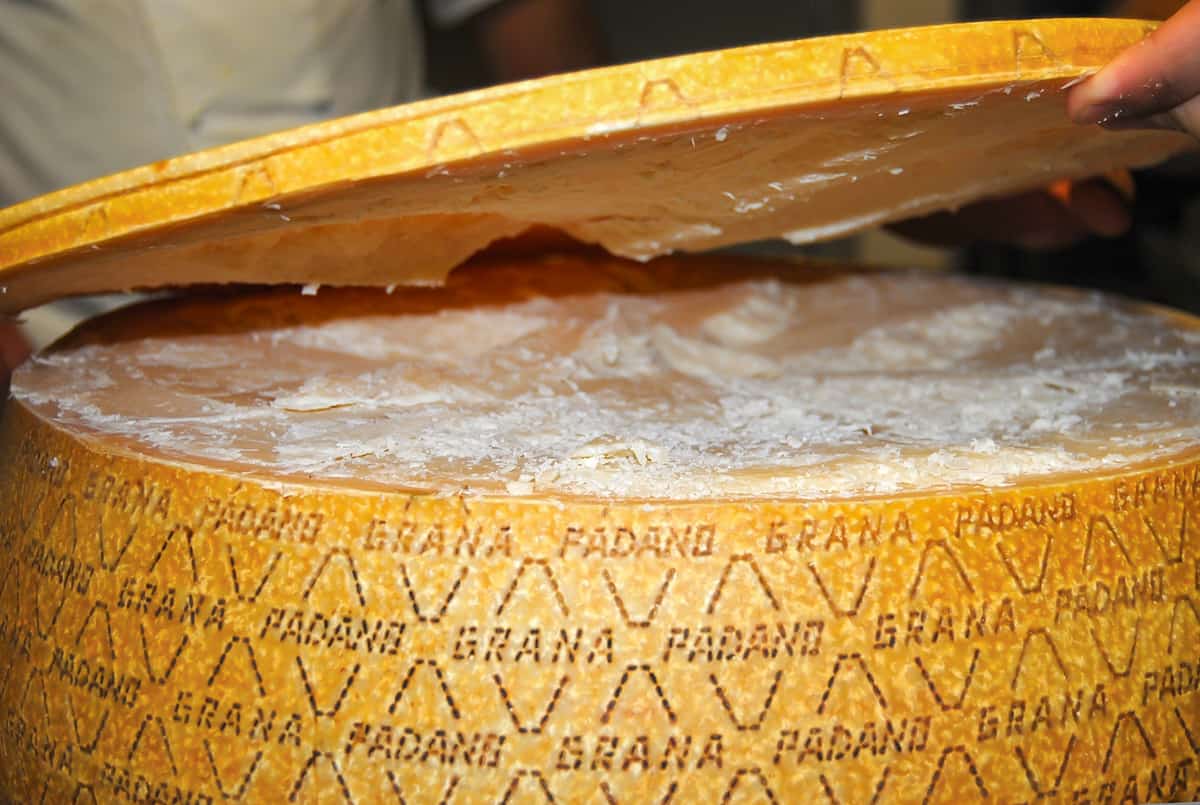
What is Grana Padano?
Another well-known cheese similar in taste and texture is Grana Padano. This is cheese is often confused with Parmigiano Reggiano as it is also a recognised DOP cheese from the same regions.
However, in contrast to the highly localised and strict production requirements of Parmigiano Reggiano, Grana Padano can be produced from farms located in 33 provinces of Italy ranging between Lombardy, Veneto, Piedmont, Emilia-Romagna and Trentino Alto.
Grana Padano – how its made
Although still extremely high in quality, Grana Padano allows the use of lysozyme, a protein extracted from hen egg-white to control unwanted fermentation. The result is a semi-fat hard cheese that is cooked and ripened slowly for at least nine months and has a similar taste to Parmigiano Reggiano, but with an entirely different level of quality requirements.
If it passes quality tests, it is fire-branded with the Grana Padano trademark. The texture is less crumbly and the taste is milder and less complex but is still an enjoyable alternative within the ‘grana’ family of cheeses.
How long is Grana Padano cheese aged?
Aging times are between 9 and 16 months at which point a softer, pale yellow, milky, and delicate flavor has developed. Over 16 months the cheese becomes more crumbly, with a crystalline texture. The Riserva (over 20 months) has less moisture, is more grainy and embodies a flaky structure.
To learn more about Grana Padano visit the website here
The Result
So now you are educated on Italian ‘grana’ cheeses and know the difference between Parmigiano Reggiano, Parmesan and Grana Padano. Below are recipe suggestions featured on Flaevor and at the end of this article, you will find further popular questions and answers regarding Parmigiano Reggiano, Parmesan and Grana Padano.
Recipes on Flaevor using Parmesan
Gnocchi with Roasted Tomato Parmesan Sauce
The ultimate plate of comfort food made with classic Italian ingredients. Gnocchi is smothered in a pan of rich oven-roasted tomato sauce enriched with salty parmesan cheese. Recipe here:
Soft Boiled Egg with Parmesan Crusted Soldiers
Not just a favourite amongst children as a breakfast meal, boiled eggs and soldiers, also known as ‘dippy eggs’ are a delicious way to start your day and very easy to make. The enhancement of parmesan cheese whipped into butter makes this an umami flavour bomb. Recipe here:
Parmesan Fried Egg Pesto Burger
Italian-style breakfast burger featuring a salty parmesan crispy fried egg. Including basil pesto, caper mayo, radicchio, tomatoes, sliced white onions and a touch of lemon juice stuffed into a toasted brioche bun. Recipe here:
Buttery Parmesan and Sage Pearl Barley
This hearty, filling pearl barley risotto has a warm comforting earthy flavour. Chicken stock adds additional flavour before each grain is pan-fried with butter and parmesan and finsihed with a garnigh of crispy sage and burnt butter and more parmesan. Buttery Parmesan and Sage Pearl Barely recipe here:
Roast Chicken on Parmesan Crusted Toast
Another beautiful and simple dish with classic Italian flavours. Perfectly juicy roasted chicken, roasted tomato, white wine and roasted garlic sauce, combined and served on parmesan-crusted toast. Recipe here:
Chicken Pesto Soup
Thick, rich, flavoursome chicken soup stock using a parmesan rind for extra umami flavour. Topped with fresh basil pesto and additional parmesan shavings as a garnish. A soup to fill your heart and body with joy. Recipe here:
Further FAQ’s about Parmigiano Reggiano, Parmesan and Grana Padano

What is the closest cheese to Parmigiano Reggiano?
Grana Padano is a recognised DOP cheese the same as Parmigiano Reggiano so has stricter quality control in place as opposed to most supermarket-purchased ‘parmesan’ With a granular, hard but also creamy texture it’s a suitable replacement.
What is the ‘King of all Cheese’?
Parmigiano Reggiano is often referred to as the “King of Cheeses”, due to its global popularity
What can you use Parmigiano Reggiano for?
Famously used as a garnish for pasta, pizza and risotto. Combined with butter and bread onto bread, melted over vegetables or stirred through polenta. It is also an important ingredient inside pesto, can be used to season soups and stocks or served on crackers and alongside other meats and cheeses on a charcuterie board. Parmigiano Reggiano is also delicious grated onto salads or mixed into buttery mashed potato.
What does Grana Padano taste like?
Grana Padano has a rich, slightly nutty flavor and a combination of a creamy and grainy texture, making it perfect for grating or serving in crumbled pieces. It can also be used in the exact same way as mentioned above.
What is the strongest Parmesan cheese?
Parmigiano-Reggiano is the highest quality produced ‘grana’ cheeses’ with the longest ageing times and strictest quality control. Therefore the flavors are unique and unparalleled in flavour and texture to other grana cheeses.
Can you eat the rind of Parmigiano Reggiano?
The rind is a protective layer that develops on the outside of the cheese wheel as it ages. It’s not officially inedible, but the texture is a little too hard and unpleasant to chew. The best way to use your leftover Parmigiano Reggiano rinds is to add them into stocks, soups and stews for a magnificent umami punch.
Why is Grana Padano cheaper than Parmigiano Reggiano?
The Grana Padano production region is much larger than Parmigiano Reggiano, which ultimately makes the cheese faster to produce and more affordable.


